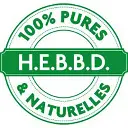Fine Lavender essential oil
Botanical name: Lavandula angustifolia
Distilled part: Flowering top
Botanical family: Lamiaceae
Origin: Provence (France)
Chemical composition:
- Aldehydes
- Ketones
- Coumarins
- Esters: Linalyl Acetate (42 to 52%)
- Lactones
- Monoterpenes: Ocimene
- Monoterpenols: Lavandulol, Linalool (32 to 42%), Terpinene 4 ol
- Oxides: 1.8 Cineole
- Sesquiterenes: Beta Caryophyllene, Beta Farnesene
Danger: Skin reaction possible, but extremely rare
Legend: * powerful,** very powerful;*** extremely powerful (power value for the associated pathology)
PHYSICAL PROPERTIES AND THERAPEUTIC INDICATIONS:
- Analgesic*, muscle analgesic*, Cramp*
- Antispasmodic*
- Burn***
- Healing*
- Wound*, pruritus*, bedsore*, dermatosis (allergic, scarring, infectious)*
- Hypertension*
- Insomnia* (babies, children, adults)*
- Varicose ulcer*
EMOTIONAL, PSYCHIC PROPERTIES AND THERAPEUTIC INDICATIONS:
- Calming*
- Anguish*
- Nervousness*
Reference and bibliographic source: Lily BAYER and Dr Hervé STAUB, (2013) “In-depth treatise on Phyto and Aromatherapy”, Ed. Grancher. p. 554.
INDICATIONS IN AROMATHERAPY AND THE USE OF ESSENTIAL OILS DO NOT CONSTITUTE A MEDICAL DIAGNOSIS AND DO NOT REPLACE THE ADVICE OF A DOCTOR OR MEDICAL TREATMENT !





